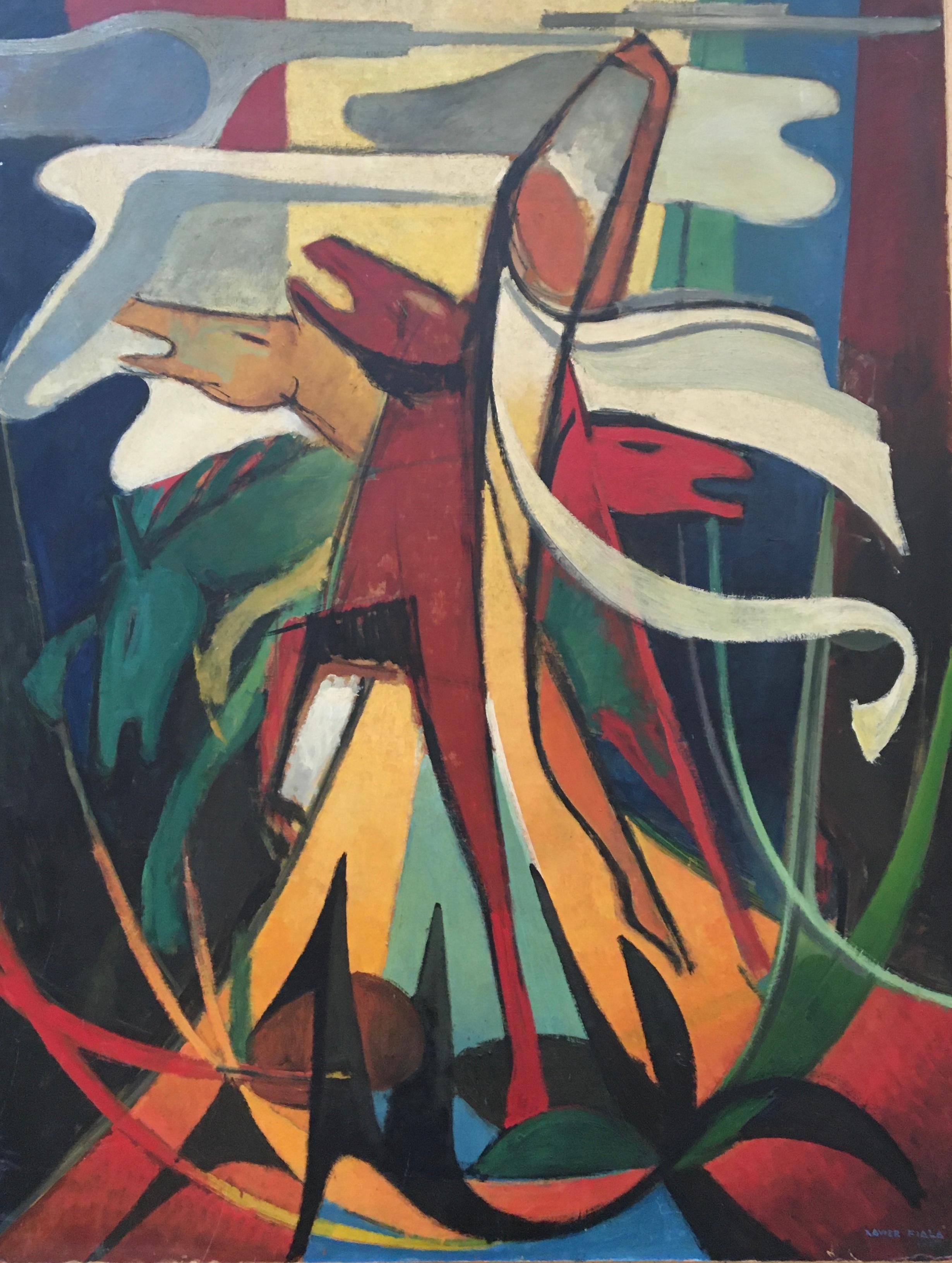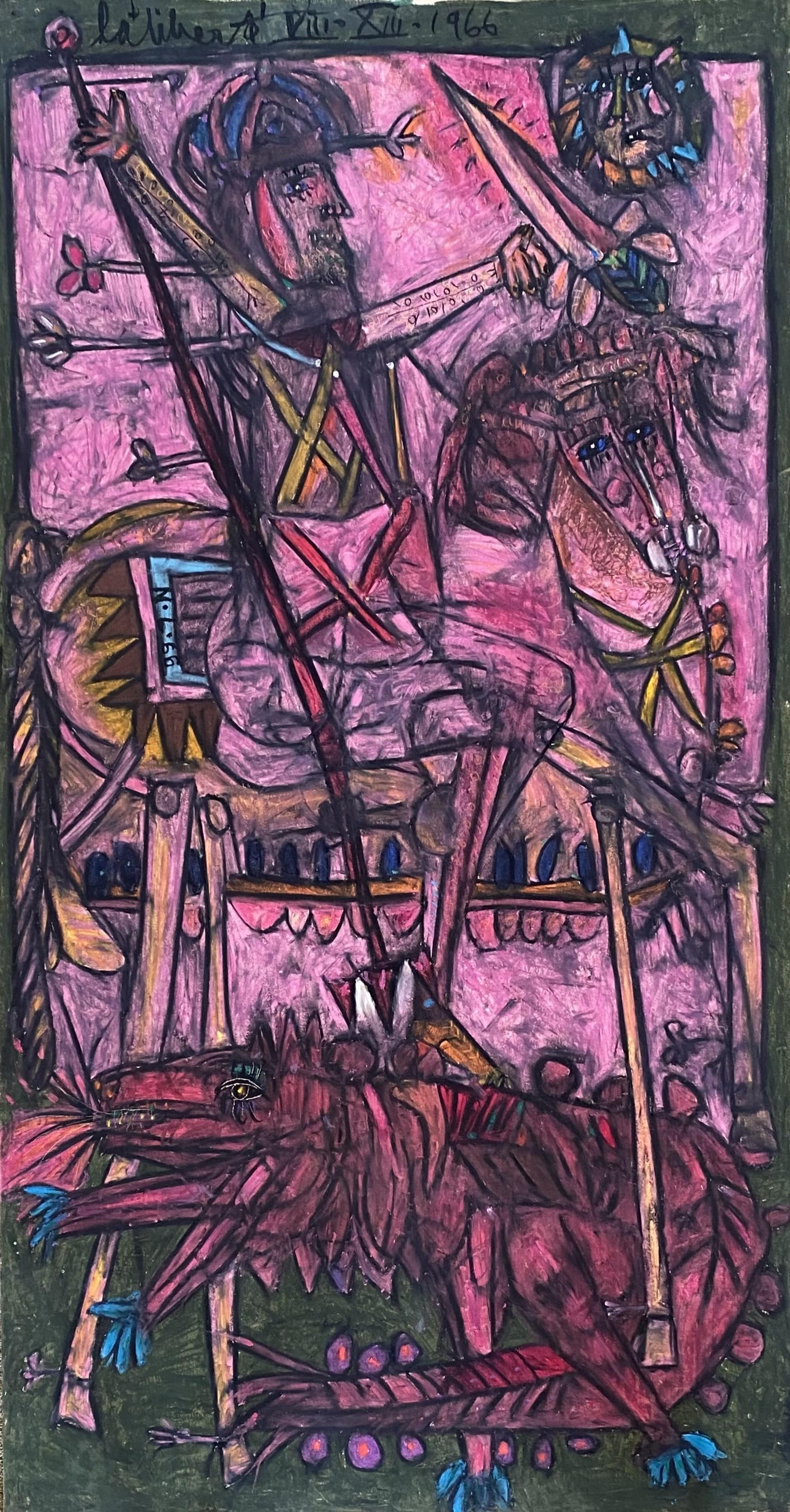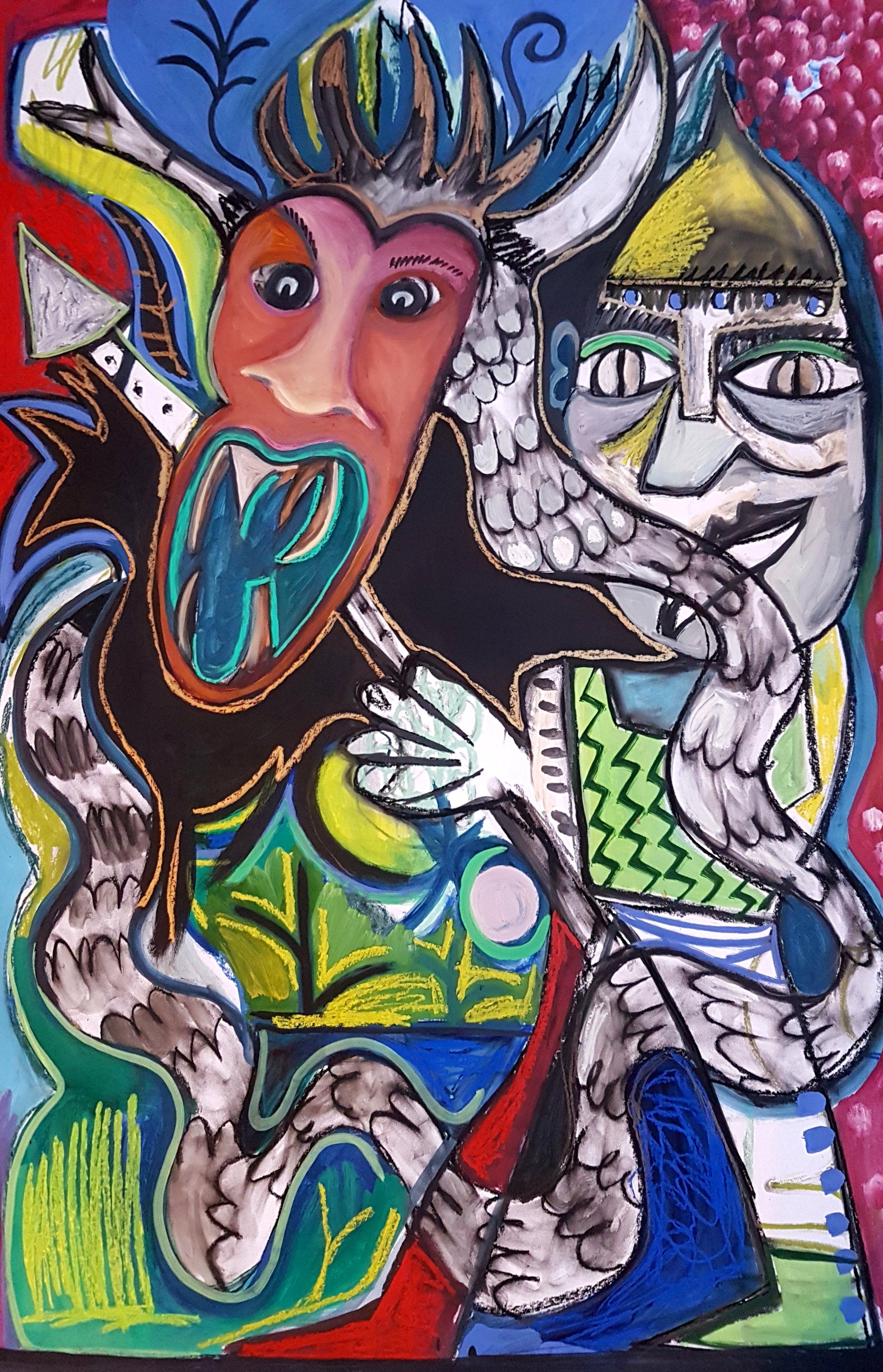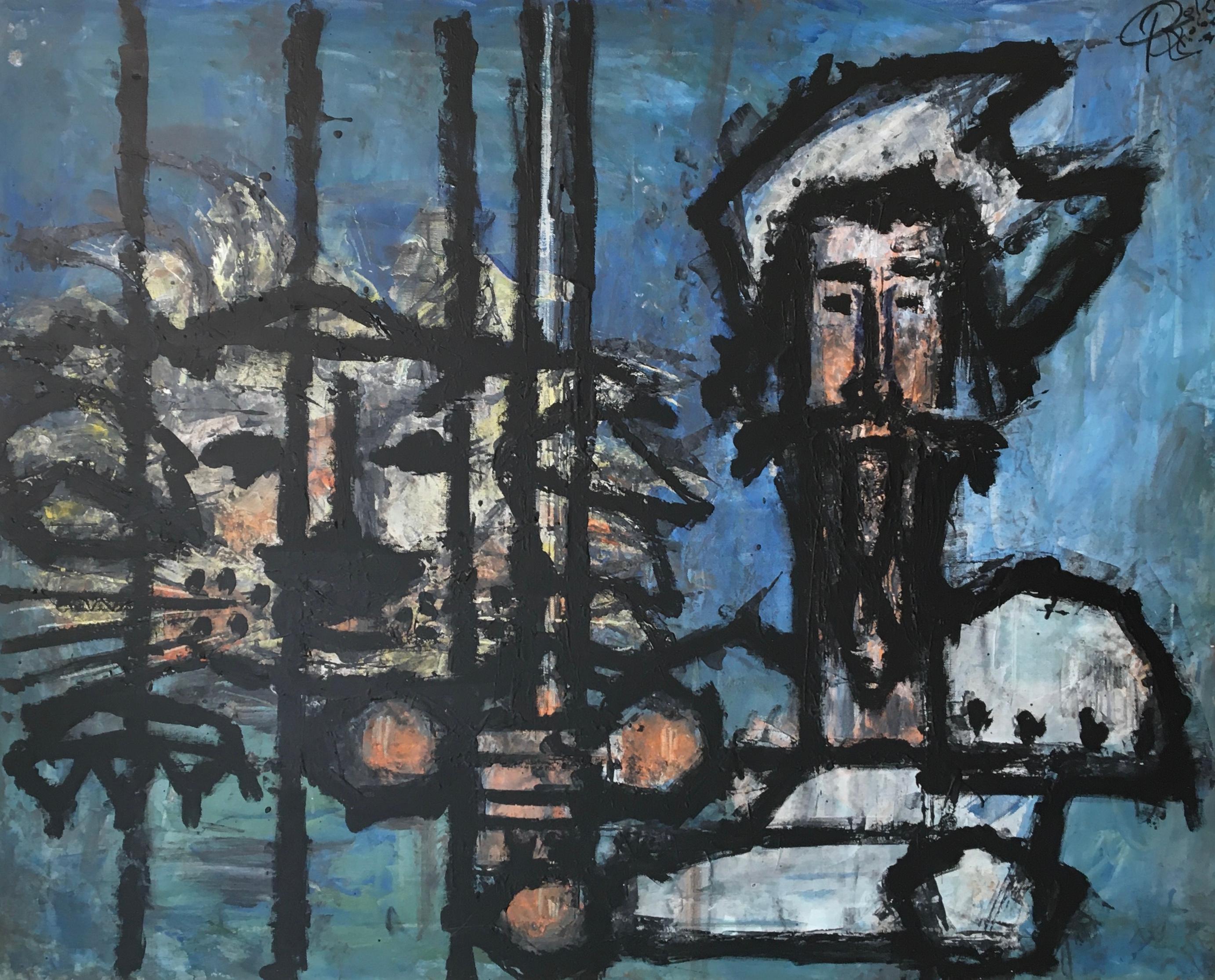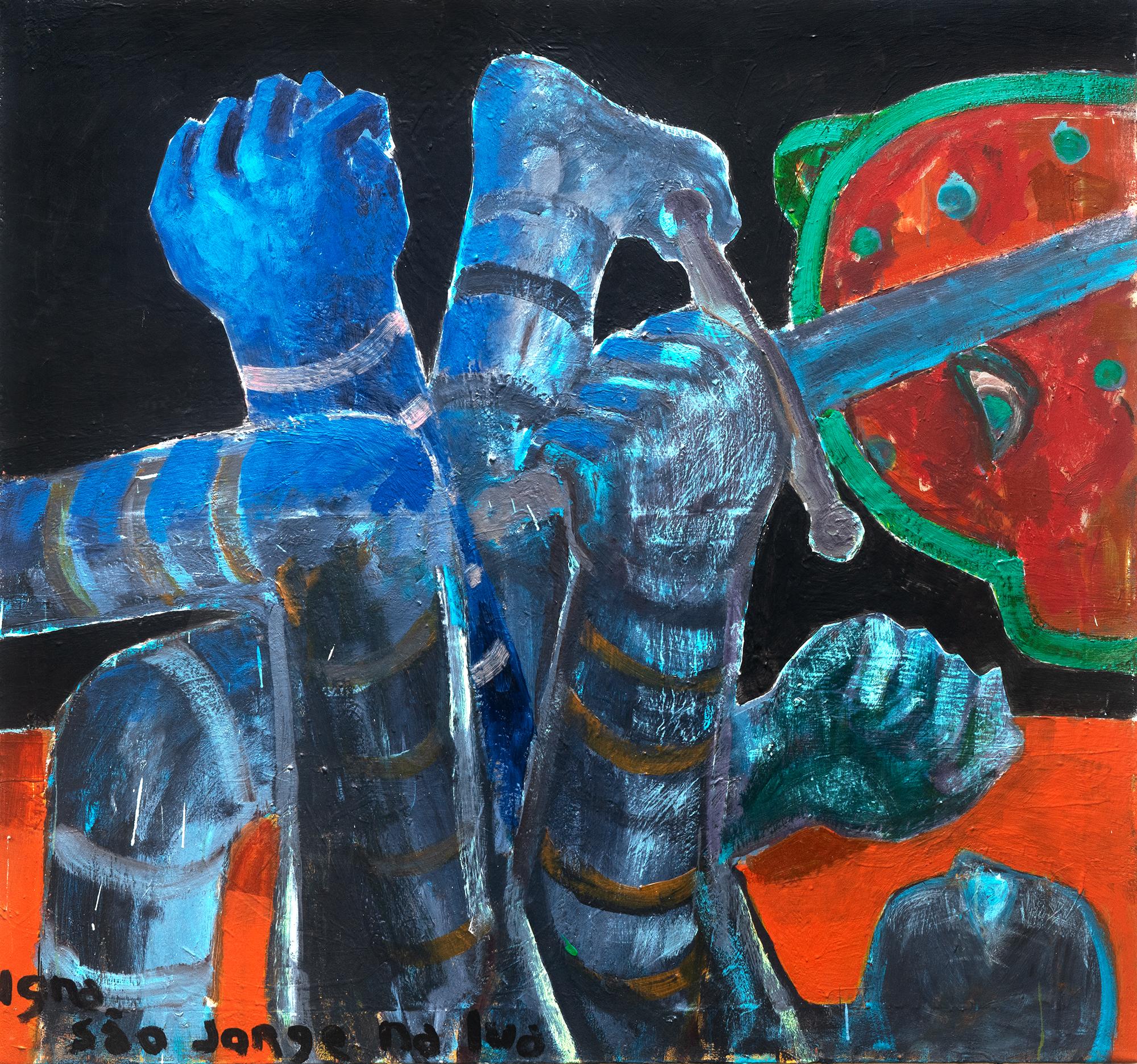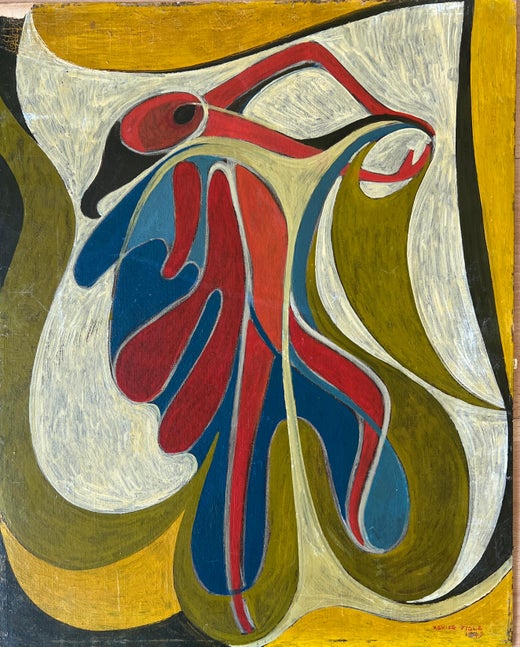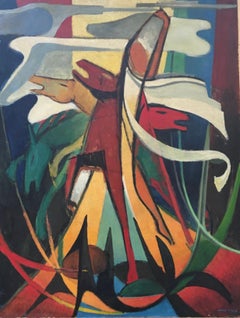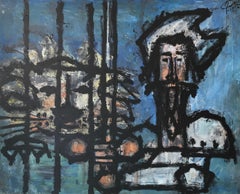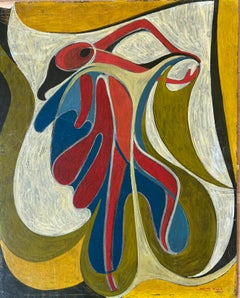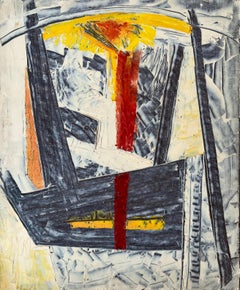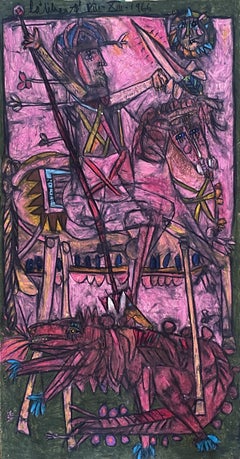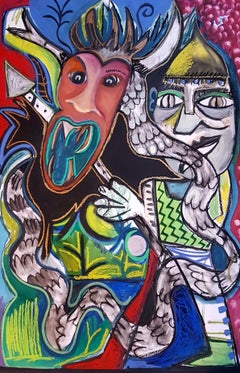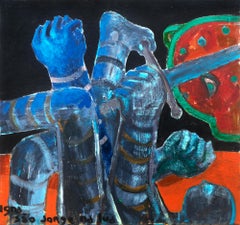Items Similar to Saint Michel Slaying the Dragon
Want more images or videos?
Request additional images or videos from the seller
1 of 12
Xavier Albert FialaSaint Michel Slaying the Dragon
$1,277.85
£944.93
€1,070
CA$1,755.24
A$1,951.73
CHF 1,021.77
MX$23,840.76
NOK 12,839.50
SEK 12,078.12
DKK 8,147.23
About the Item
Work on wood
Direct from the artist's studio
- Creator:Xavier Albert Fiala (1910 - 1973, Swiss)
- Dimensions:Height: 19.57 in (49.7 cm)Width: 14.97 in (38 cm)Depth: 0.2 in (5 mm)
- Medium:
- Period:
- Condition:
- Gallery Location:Genève, CH
- Reference Number:1stDibs: LU2018214175802
Swiss artist born and died in Geneva. Painter of landscapes, portraits and nudes. Draftsman and engraver on linoleum.
About the Seller
5.0
Vetted Professional Seller
Every seller passes strict standards for authenticity and reliability
1stDibs seller since 2022
148 sales on 1stDibs
Typical response time: 11 hours
- ShippingRetrieving quote...Shipping from: Genève, Switzerland
- Return Policy
Authenticity Guarantee
In the unlikely event there’s an issue with an item’s authenticity, contact us within 1 year for a full refund. DetailsMoney-Back Guarantee
If your item is not as described, is damaged in transit, or does not arrive, contact us within 7 days for a full refund. Details24-Hour Cancellation
You have a 24-hour grace period in which to reconsider your purchase, with no questions asked.Vetted Professional Sellers
Our world-class sellers must adhere to strict standards for service and quality, maintaining the integrity of our listings.Price-Match Guarantee
If you find that a seller listed the same item for a lower price elsewhere, we’ll match it.Trusted Global Delivery
Our best-in-class carrier network provides specialized shipping options worldwide, including custom delivery.More From This Seller
View AllPhoebus
Located in Genève, GE
Work on wood
Category
1940s Abstract Abstract Paintings
Materials
Oil
Don Quichotte
Located in Genève, GE
Oil on canvas
Category
1940s Italian School Abstract Paintings
Materials
Oil
Dance
Located in Genève, GE
Work on wood
This abstract work is distinguished by its dynamic curves and vivid colors. Dominated by shades of red, blue and green, it evokes a fluid dance of organic forms. The sin...
Category
1940s Abstract Abstract Paintings
Materials
Oil
Sailing ship
Located in Genève, GE
Work on wood
Unsigned
Direct from the artist's studio
Category
20th Century Abstract Abstract Paintings
Materials
Oil
Four
Located in Genève, GE
Work on wood
Category
Mid-20th Century Abstract Abstract Paintings
Materials
Oil
$1,015
Comedia
Located in Genève, GE
Work on canvas
Category
21st Century and Contemporary Abstract Abstract Paintings
Materials
Acrylic
You May Also Like
St. George and the Dragon
By Norman Laliberté
Located in Los Angeles, CA
Mixed media on heavy paper mounted on canvas presumably by the Artist.
Signed on top and again on artwork,titled verso.
Great condition with strong vibrant colors.
American/Canadian printmaker, painter, sculptor, author, and educator Norman Laliberte was born in Worcester, Massachussets, in 1925, to French Canadian parents. He was raised in Montreal, Canada, where he attended l'Ecole du Musee des beaux-arts. After graduation in 1948 he returned to the U.S. to continue his studies at the Institute of Design (BS, 1951) and the Illinois Institute of Technology Chicago (MS in art education, 1956). Additional courses took place at Worcester Museum and the Cranbrook Academy in Michigan, to which he was granted a painting scholarship. He then began an extensive exhibiting career in conjunction with his work as a teacher.
He began teaching in 1959, first at Kansas City Art Institute in Missouri from 1959 to 1960. This was followed by positions at St. Mary's College at Notre Dame Univerity, Indiana (1960 - '65); Rhode Island School of Design (1965 - '66); Newton College, Massachusetts (1967); and RISD once again from 1976 - 1977. Additionally, he was a guest lecturer and workshop leader at a variety of schools in both the U.S. and Canada. He received an honorary doctorate from both Notre Dame and McGill University. During his time as a teacher he continued to show in group and solo exhibitions;nhis first solo show took place at the Waddington Galleries in Montreal in 1965.
A major feature of Laliberte's early output was banners executed in fabric, inpired by a trip he took to the Italian city of Siena during their summer festivals. This would prove to be a key turn in his career, as he was commissioned to work a consultant at the 1964 New York World's Fair, creating a structure made of 88 banners to represent stained glass walls for the Vatican Pavilion; this job earned him international recognition as both an artist and a designer. His most recent commission was eighteen large panels for the International Terminal at the Logan Airport in Boston. Norman LaLiberté died at his home in Nahant, Massachusetts on September 10, 2021.
Selected collections:
Aetna Insurance, Hartford, Ct.; Air Canada; Albright-Knox Gallery, Buffalo, NY; Alcan, Montréal; American Airlines; Art Institute of Chicago; Arthur Heaney Memorial, Ottawa; Ashland Oil; Banque Nationale du Canada; Bishop’s University, Lennoxville, Québec; Blankman Investments, Miami; CBS Building, New York; C.Y.R.K., NY; Citicorp, NY; City of Binghampton, NY; Claridge, Montreal Columbia University, School of Architecture, NY; Conseil des Arts du Canada; Coopers and Lybrand, Boston; Corning Community College, Corning, NY; Cotton, New York; Createx, Simsbury, CT; Channel 13...
Category
1960s Modern Mixed Media
Materials
Mixed Media
St Georges fighting the dragon -Timothy Archer, 21st Century paint, Figurative
By Timothy Archer
Located in Paris, FR
Oil paint, pastel and charcoal on paper
Signed and dated by the artist
Category
2010s Contemporary Figurative Paintings
Materials
Paper, Charcoal, Oil Pastel, Oil
St. George and the Dragon, Abstract Expressionist Painting by Alfred van Loen
By Alfred Van Loen
Located in Long Island City, NY
Artist: Alfred van Loen, Dutch/American (1924 - 1994)
Title: St. George and the Dragon
Year: 1947
Medium: Watercolor, signed and dated
Size: 15 x 20.5 inches
Frame Size: 18 x 24.5 ...
Category
1940s Abstract Expressionist Figurative Drawings and Watercolors
Materials
Watercolor
St. George, Painting. From the Series Figures
Located in Miami Beach, FL
"For Jose Ignacio Suarez an abyss of time and space distances him from those who were the first inhabitants of the Brazilian coasts and of this vast American continent. His initial l...
Category
2010s Abstract Abstract Paintings
Materials
Canvas, Acrylic
The Magician oil and tempera painting by Julio de Diego
By Julio de Diego
Located in Hudson, NY
Julio De Diego’s Atomic Series paintings made an extraordinary statement regarding the shock and fear that accompanied the dawn of the nuclear age. In the artist’s own words, “Scientists were working secretly to develop formidable powers taken from the mysterious depths of the earth - with the power to make the earth useless! Then, the EXPLOSION! . . . we entered the Atomic Age, and from there the neo-Atomic war begins. Explosions fell everywhere and man kept on fighting, discovering he could fight without flesh.”
To execute these works, De Diego developed a technique of using tempera underpainting before applying layer upon layer of pigmented oil glazes. The result is paintings with surfaces which were described as “bonelike” in quality. The forms seem to float freely, creating a three-dimensional visual effect. In the 1954 book The Modern Renaissance in American Art, author Ralph Pearson summarizes the series as “a fantastic interpretation of a weighty theme. Perhaps it is well to let fantasy and irony appear to lighten the devastating impact. By inverse action, they may in fact increase its weight.”
Exhibited
1964 Marion Koogler McNay Art Institute, San Antonio, Texas
This work retains its original frame which measures 54" x 42" x 2"
About this artist: Julio De Diego crafted a formidable persona within the artistic developments and political struggles of his time. The artist characterized his own work as “lyrical,” explaining, “through the years, the surrealists, the social-conscious painters and the others tried to adopt me, but I went my own way, good, bad or indifferent.” [1] His independence manifested early in life when de Diego left his parent’s home in Madrid, Spain, in adolescence following his father’s attempts to curtail his artistic aspirations. At the age of fifteen he held his first exhibition, set up within a gambling casino. He managed to acquire an apprenticeship in a studio producing scenery for Madrid’s operas, but moved from behind the curtains to the stage, trying his hand at acting and performing as an extra in the Ballet Russes’ Petrouchka with Nijinsky. He spent several years in the Spanish army, including a six-month stretch in the Rif War of 1920 in Northern Africa. His artistic career pushed ahead as he set off for Paris and became familiar with modernism’s forays into abstraction, surrealism, and cubism.
The artist arrived in the U.S. in 1924 and settled in Chicago two years later. He established himself with a commission for the decoration of two chapels in St. Gregory’s Church. He also worked in fashion illustration, designed magazine covers and developed a popular laundry bag for the Hotel Sherman. De Diego began exhibiting through the Art Institute of Chicago in 1929, and participated in the annual Chicago Artists Exhibitions, Annual American Exhibitions, and International Water Color Exhibitions. He held a solo exhibition at the Art Institute of Chicago in the summer of 1935. Though the artist’s career was advancing, his family life had deteriorated. In 1932 his first marriage dissolved, and the couple’s young daughter Kiriki was sent to live with friend Paul Hoffman.
De Diego continued to develop his artistic vocabulary with a growing interest in Mexican art. He traveled throughout the country acquainting himself with the works of muralists such as Carlos Merida, and also began a collection of small native artifacts...
Category
1940s American Modern Abstract Paintings
Materials
Masonite, Oil, Tempera
French Modern Art by Francis Moreau - Le Sceptre du Vent
By Francis Moreau
Located in Paris, IDF
Oil paint on canvas
80 x 60 cm
2016
Francis Moreau is a French artist (1940-2021) who lived and worked in Paris, France. Like many others, he wasn't born with a brush from childhoo...
Category
2010s Contemporary Abstract Paintings
Materials
Canvas, Oil
More Ways To Browse
Blue Dragons
Wood Dragon
Vintage Dragon Art
Rococo Oil Paintings
Running Horses
Gold Framed Bird Paintings
Oil On Panel 17th Century
Hawaiian Wood
Western Horse Painting
Black Dog Oil Painting
Horse Charcoal
Horse Stable
Antique Equestrian Art
Gold Rabbit
Jungle Animals
19th Century Oil Painting Dog
Horse And Dog
Exotic Butterfly
